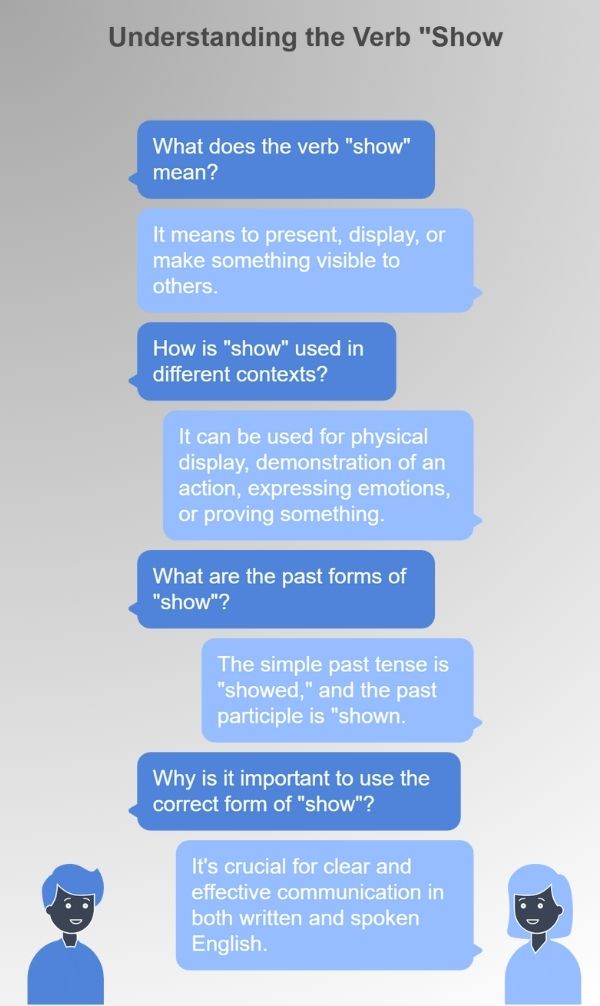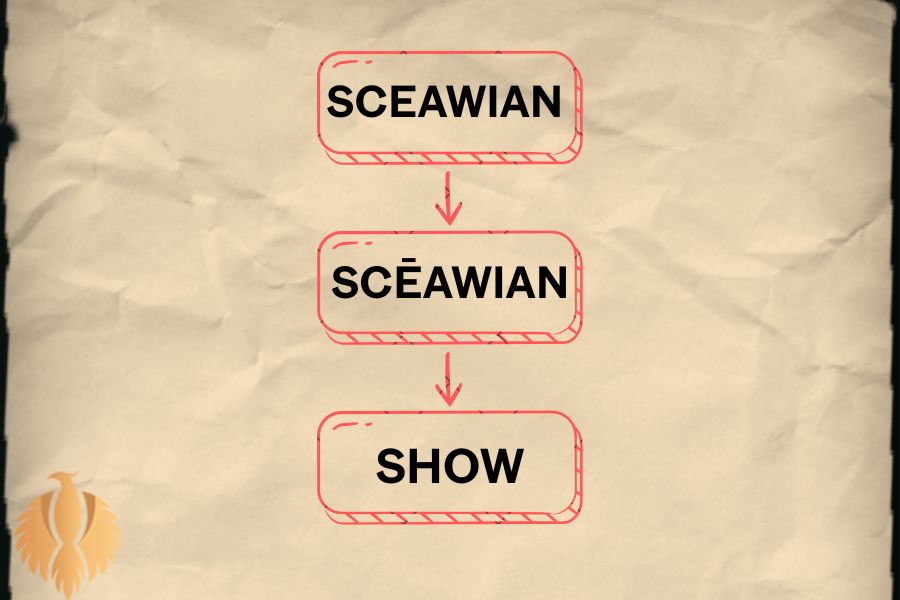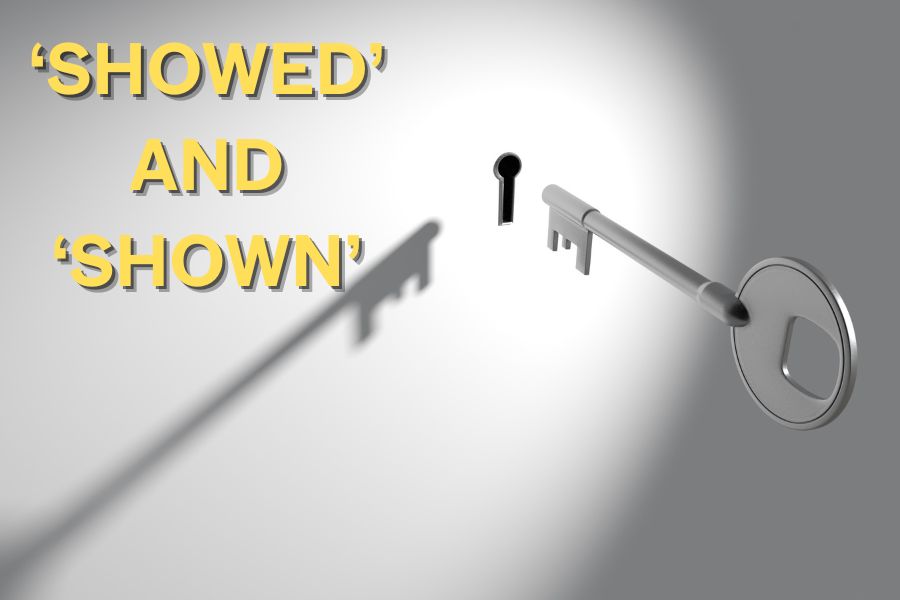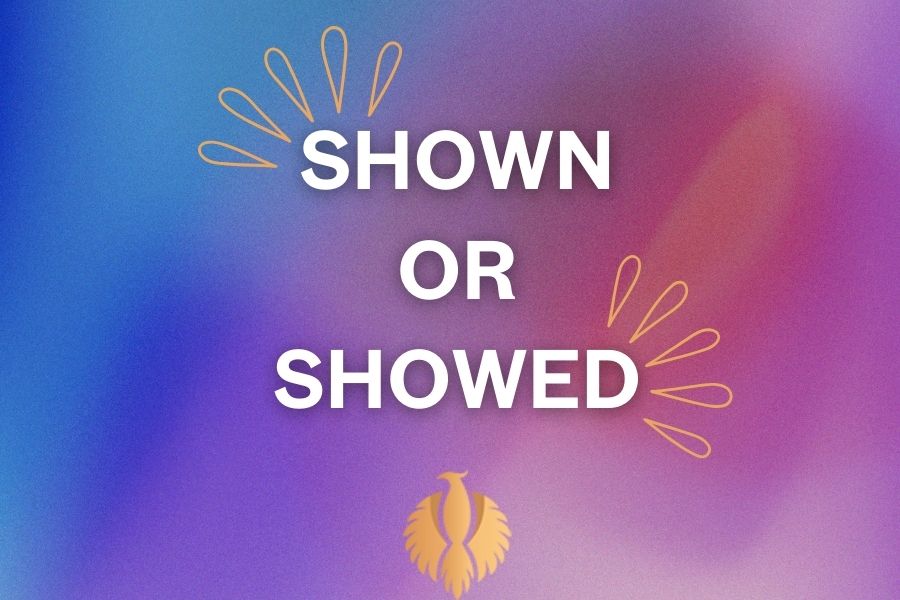What is the difference between ‘showed’ and ‘shown’? The answer is simple. ‘showed’ is the past tense of ‘show’ (e.g., ‘He showed me his car’), while ‘shown’ is the past participle, meaning it’s used with words like ‘have/has’ or ‘had’ to form the perfect tenses(e.g., ‘He has shown me his car’) or passive voice.
Have you ever stopped mid-sentence, second-guessing whether to use ‘showed’ or ‘shown’ in your sentence?
Well, You are not alone.
Although the distinction between these two verb forms is quite obvious even at first glance, some learners might still struggle to choose the right one for the context and time they have in mind.
Understanding when to use ‘showed,’ which is the simple past, and ‘shown,’ which is the past participle, is crucial if you are to master English grammar and produce grammatically correct sentences.
In this article, we’ll break down their differences, provide plenty of examples, and ensure you never doubt your choice again.
Having a thorough understanding of verb tenses is essential for communicating effectively.
The question is, why are verb tenses so important that even a small alteration in the verb form might change the time or even render a phrase grammatically incorrect?
The answer is simple and straightforward; verb tenses allow us to express exactly when an action occurs.
When you utilize verb tenses correctly, your message will be understood clearly and effectively, whether you are discussing something that happened in the past, describing an event that is happening at the moment, or making predictions about the future.
Sentences can become difficult to understand and lose their intended meaning if these tenses are not accurately learned.
Thus, mastering the past, present, and future tenses is essential to becoming accurate and fluent in English.
You Might Also Enjoy: Cancelled or Canceled; Spelling; Examples [2025]
Understanding the verb ‘show’

The verb “show” is one of the most commonly used verbs in English. It appears in both casual and formal contexts.
However, according to the Longman dictionary, In written English, people often prefer to use ‘indicate,’ which sounds more formal than show.
In scientific contexts, they often prefer ‘prove’ or ‘demonstrate’, which sound more definite.
At its core, “show” means to present, display, or make something visible to others. Here are different definitions provided by various dictionaries:
to make it possible for something to be seen
Merriam-Webster dictionary:
To cause or permit to be seen or to exhibit
Oxford dictionary:
To make something clear; to prove something
Longman dictionary:
To let someone see something
As you can see, they all provide the same definition but each one is worded differently.
“Show” is a highly versatile verb that can be used in various contexts:
Physical display: “She showed me her new phone.”
Demonstration of an action: “The professor showed us how to solve the math problem.”
Expressing emotions or qualities: “She shows great enthusiasm for learning new languages.”
Proving something: “The evidence shows that I was right.”
Since “show” is an irregular verb, its past form is different from the base form.
The simple past tense is “showed,” while the past participle is “shown.”
Understanding when to use each of these forms correctly is crucial for clear and effective communication in both written and spoken English.
You Might Also Enjoy: Seeked vs. Sought: Correct Usage + Examples
The origin of the word ‘show’

Where does the verb ‘show’ come from? The earliest recorded use of the verb show is in the Old English period (pre-1150). This was a word inherited from Germanic.
The original meaning, “let be seen; put in sight,” was altered in c. 1200 for unknown reasons.
This seems to be unique to English as the German word schauen still means “look at”.
The sense of “explain, make clear” is from c. 1300, just like the intransitive sense of “be seen, appear.”
The spelling shew, became popular in 18c. And survived into early 19c. This word with this specific spelling represents an obsolete pronunciation (rhymes with view).
More elaborately, the English word show comes from Proto-Indo-European *(s)kew-, Proto-Indo-European *(s)kewh₁-, and later Proto-Germanic *skawwōną (To look, see, watch.
The Past Tense Forms: “Showed” vs. “Shown”

When we want to change verbs into their past tense, they are categorized as regular or irregular.
Regular verbs form by adding -ed to the base form of the verb (e.g. talk becomes talked).
Sometimes, when we’re working with verbs that end in -e, like the verb ‘dance,’ we only need to add -d to the verb (e.g., dance becomes danced).
Despite their inclusion under the ambiguous adjective category, several key irregular verbs in English do not flow through the course of normal patterns while modifying.
Irregular verbs are conjugated in various ways which surprises elementary English learners every time;
Their form might completely change (e.g. go becomes went) or even stay the same ( cut remains cut).
The reason why many learners find the conjugation of ‘show’ confusing is that we form its past tense by adding -ed to it, just like a regular verb.
However, the past participle changes a bit and becomes ‘shown’, which is irregular!
Don’t get confused though. Some other irregular verbs follow a similar pattern:
Mow Mowed Mown
Saw Sawed Sawn/Sawed
Sew Sewed Sewn/Sewed
Sow Sowed Sown
Mastering Irregular verbs in English is a never-ending journey for learners as these kinds of verbs play by their own rules and do not follow a single simple pattern.
They’re strange, unpredictable, and totally uninterested in consistency.
But that’s what makes them kind of fun!
Working with the very first few may seem very confusing but, once you have a success in a few, it will not really be that hard anymore.
You Might Also Enjoy: Objective Vs Subjective Language: Ultimate Guide [2025]
When to use ‘showed’

The past tense form of the verb ‘show’ is showed.
You use it when you are referring to an action that happened and was completed at a specific known time in the past.
You must use this form of the verb when you are describing an event or something that happened before.
This form is used without any helpers or auxiliary verbs such as has, have or had. It stands on its own. For example:
“She showed me her homework after class.”
“They showed great enthusiasm during the
Speech.”
Whether you’re writing a story, or explaining a past situation, “showed” is the form to reach for when you’re simply reporting what happened-—no special tense is required. This can be spotted in:
Narratives: “He showed great courage in the face of danger and protected his family the best way he could.”
Conversations: “I showed her the way to the central park, chit-chatting on the way.”
Reports or studies: “The statistics showed a significant improvement in all aspects.”
Quick reminder: Never say “has showed”. It’s grammatically incorrect. If you need a helping verb like has or had, you should be using “shown” instead. But more on that in the next section!
When to use ‘shown’
‘shown’ is the past participle form of ‘show’.
Unlike ‘showed’, it cannot be used alone.
it always needs a helping (auxiliary) verb such as has, have, had, was, were, or been.
The past participle has two main usages.
It is used in the perfect tenses or as an adjective describing an action that has already been completed(e.g. he has finished his paper).
It’s also a key component in using the passive voice(e.g. the paper was finished yesterday).
You Might Also Enjoy: Momma Or Mama – Which One is Correct + Correct Spelling and Grammar
’shown’ in perfect tenses
We use perfect tenses when we talk about actions that are already completed, or we assume that they are completed when we are speaking about them.
Examples:
Present perfect: “She has shown great progress from the beginning of this semester.”
Past perfect: “They had shown interest before the event started.”
Future perfect: “By then, he will have shown his skills to prove his worth to us.”
‘shown’ in passive voice
We use passive voice when we want to shift the focus of the sentence from the doer to the action.
We might use it in these cases:
- The doer is unknown
- The doer is irrelevant or not important enough to mention
- You want to be vague about who is responsible to hide the identity of the doer
- You are talking about a general truth or a fact
- You are writing in a scientific genre or formal register that traditionally relies on passive voice.
Examples:
“The results were shown to be accurate.”
“He was shown the way to his hotel room.”
Quick reminder: be careful not to say “has showed”, “have showed”, or “had showed”.These are all grammatically incorrect.
Always remember that “shown” is the only correct option when preceded by a helping (auxiliary) verb such as has, have, had, was, were, or been.
Now that both forms are clarified, the next section will directly compare them and provide tips for remembering the differences.
Key differences between ‘showed’ and ‘shown’

Even though “showed” and “shown” both originate from the verb show, they each serve a unique purpose in English grammar.
Knowing how they are different from each other is essential if you want to use them correctly and avoid common mistakes in spoken or written language.
Let’s start with “showed.” This is the simple past tense, which means that it’s used to describe an action that began and ended in the past.
It doesn’t need any helper verbs and can stand alone in a sentence.
An example could be, “He showed me the way,” or “They showed interest during the presentation.”
In both cases, the action is completed, and nothing else is needed.
In contrast, “shown” is the past participle form and that implies always requiring an auxiliary verb to be used.
“Shown” is used in perfect tenses such as has shown, have shown, or had shown, or it might be used in the passive form as was shown or has been shown.
For example, “She has shown considerable improvement lately,” or “The results were shown at the meeting.”
You Might Also Enjoy: Sometime Vs. Some Time: Correct Usage + Examples
Examples

examples with the verb ‘showed’
- She eagerly showed her classmates the photos she had taken during her summer trip to Italy.
- They showed incredible determination and teamwork while completing the challenging group project together.
- He showed up late to the family dinner, but everyone was so happy to see him nonetheless.
- When I arrived there, I showed my ticket to the usher, who then guided me to my seat in the theater.
- The teacher showed the students a documentary that explained the new lesson in great detail.
- You showed remarkable patience and calmness with the children during the long, tiring road trip.
- We showed the guests around the museum and pointed out all the most interesting exhibits.
- The film they showed last night on TV and received excellent reviews from critics and viewers.
- I can’t believe that My brother showed no reaction when he received the surprising news about his promotion.
- She showed her genuine support by attending every single one of her friend’s performances.
- As a tour guide, I showed the group all the landmarks of the city, from quiet parks to historic buildings, and they were absolutely delighted by the experience that day.
- They showed me a faster way to complete the assignment without lowering the quality.
- I showed up to the interview well-prepared, on time, and dressed professionally.
- He showed his appreciation by writing a heartfelt thank-you note to his mentor for all his efforts.
- The painting showed signs of age, likely from years of being exposed to sunlight.
- In the summer camp, We showed the children how to build a simple birdhouse using recycled materials.
- You showed me how hard work and perseverance can lead to amazing opportunities.
- The doctor showed genuine concern for the elderly patient and took extra time to explain the treatment to her.
- The evidence showed that the artifact was older than expected, dating back to the 15th century.
- The children proudly showed me their presents.
Examples with the verb ‘shown’
- She has shown great improvement in her speaking skills over the past few weeks.
- The new test results have shown that the treatment is highly effective.
- I have shown you the directions before, so you should be able to find the place on your own now.
- He had shown his support by donating to the local children’s hospital last year.
- They have shown a lot of patience while waiting at the bus station.
- I’ve heard that The teacher had already shown the students how to solve the math problems before the exam.
- By the time I arrived, she had already shown the guests around the villa.
- The evidence has shown that the suspect was not present at the crime scene.
- She had shown the menu to everyone in the group before they made their decision.
- The movie has shown us a completely new perspective on this matter.
- He has shown interest in learning how to play the piano recently.
- The experiment has shown that there is a significant difference between the two age groups.
- They have shown their true colors after the incident last month.
- The documents have shown that all the previous claims were false.
- The group has shown remarkable progress since the beginning of the new project.
- She has shown bravery in difficult situations.
- The photos have shown just how beautiful the beach is.
- He has shown that he is very good at handling the responsibility.
- The data has shown an upward trend in sales over the past year.
- The doctor has shown the patient how and when to use the medication.

Hi, welcome to my blog! My name is Omid and I am thrilled to have you here! I am an English language teacher with 12 years of experience and hold multiple international certifications (TESOL, IELTS, TOEFL, PTE, CELTA). Additionally, I hold a PhD in Applied Linguistics with a specialization in Teaching English as a Second Language (TESL), which fuels my passion for teaching English and assisting others in mastering the language. To me, nothing is more rewarding than helping individuals enhance their English language abilities through various methods. So, let’s embark on this journey of learning English together.




